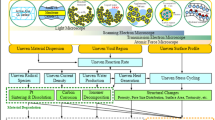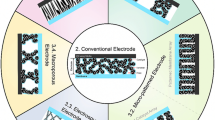Abstract
The proton exchange membrane generation technology is highly efficient and clean, and is considered as the most hopeful “green” power technology. The operating principles of proton exchange membrane fuel cell (PEMFC) system involve thermodynamics, electrochemistry, hydrodynamics and mass transfer theory, which comprise a complex nonlinear system, for which it is difficult to establish a mathematical model. This paper first simply analyzes the necessity of the PEMFC generation technology, then introduces the generating principle from four aspects: electrode, single cell, stack, system; and then uses the approach and self-study ability of artificial neural network to build the model of nonlinear system, and adapts the Levenberg-Marquardt BP (LMBP) to build the electric characteristic model of PEMFC. The model uses experimental data as training specimens, on the condition the system is provided enough hydrogen. Considering the flow velocity of air (or oxygen) and the cell operational temperature as inputs, the cell voltage and current density as the outputs and establishing the electric characteristic model of PEMFC according to the different cell temperatures. The voltage-current output curves of model has some guidance effect for improving the cell performance, and provide basic data for optimizing cell performance that have practical significance.
Similar content being viewed by others
References
Baschuk, J.J., Li, X., 2000. Modelling of polymer electrolyte membrane fuel cells with variable degrees of water flooding.Journal of Power Sources,86:181–196.
Bender, G., Wilson, M.S., Zawodzinski, T.A., 2003. Further refinements in the segmented cell approach to diagnosing performance in polymer membrane fuel cells.Journal of Power Sources,123:163–171.
Berning, T., Djilali, N., 2003. Three-dimensional computational analysis of transport phenomena in a PEM fuel cell-a parametric study.Journal of Power Sources,124:440–452.
Berning, T., Lu, D.M., Djilali, N., 2002. Three-dimensional computational analysis of transport phenomena in a PEM fuel cell.Journal of Power Sources,106:284–294.
Efe, M.O., Abadoglu, E., Kaynak, O., 1999. A novel analysis and design of a neural network assisted nonlinear controller for a bioreactor.Int. Journal of Robust Nonlinear Control,9:799–815.
Ferng, Y.M., Tzang, Y.C., Pei, B.S., Sun, C.C., Su, A., 2004. Analytical and experimental investigations of a proton exchange membrane fuel cell.International Journal of Hydrogen Energy,29:381–391.
Kalogirou, S.A., 2001. Artificial neural networks in renewable energy systems applications: a review.Renew Energy Rev,5:373–401.
Kumar, A., Reddy, R.G., 2003. Modeling of polymer membrane fuel cell with metal foam in the flow-field of the bipolar/end plates.Journal of Power Sources,114:54–62.
Lee, W.Y., Park, G.G., Yang, T.H., Yoon, Y.G., Kim, C.S., 2004. Empirical modeling of polymer electrolyte membrane fuel cell performance using artificial neural network.International Journal of Hydrogen Energy,29:961–966.
Maggio, G., Recupero, V., Pino, L., 2001. Modeling polymer electrolyte fuel cells: an innovative approach.Journal of Power Sources,101:275–286.
Mann, R.F., Amphlett, J.C., Hooper, M.A.I., Jensen, H.M., Peppley, B.A., 2000. Development and application of a generalised steady-state electrochemical model for a PEM fuel cell.Journal of Power Sources,86:173–179.
Rodatz, P., Buchi, F., Onder, C., Guzzella, L., 2004. Operational aspects of a large PEFC stack under practical conditions.Journal of Power Sources,128:208–217.
Rowe, A., Li, X., 2001. Mathematical modeling of proton exchange membrane fuel cells.Journal of Power Sources,102:82–88.
Shen, C., 2002. Nonlinear modeling of MCFC stack based on RBF neural networks identification.Simulation Modeling Practice and Theory,10:109–119.
Shen, C., Cao, G.Y., 2002. Nonlinear modeling and adaptive fuzzy control of MCFC stack.Journal of Process Control,12:831–839.
Wang, L., Husar, A., Zhou, T., Liu, H., 2003. A parametric study of PEM fuel cell performances.International Journal of Hydrogen Energy,28:1263–1272.
Author information
Authors and Affiliations
Additional information
Project (No. 2002AA517020) supported by the Hi-Tech Research and Development Program (863) of China
Rights and permissions
About this article
Cite this article
Tao, S., Guang-yi, C. & Xin-jian, Z. Nonlinear modeling of PEMFC based on neural networks identification. J. Zheijang Univ.-Sci. A 6, 365–370 (2005). https://doi.org/10.1631/jzus.2005.A0365
Received:
Revised:
Published:
Issue Date:
DOI: https://doi.org/10.1631/jzus.2005.A0365




